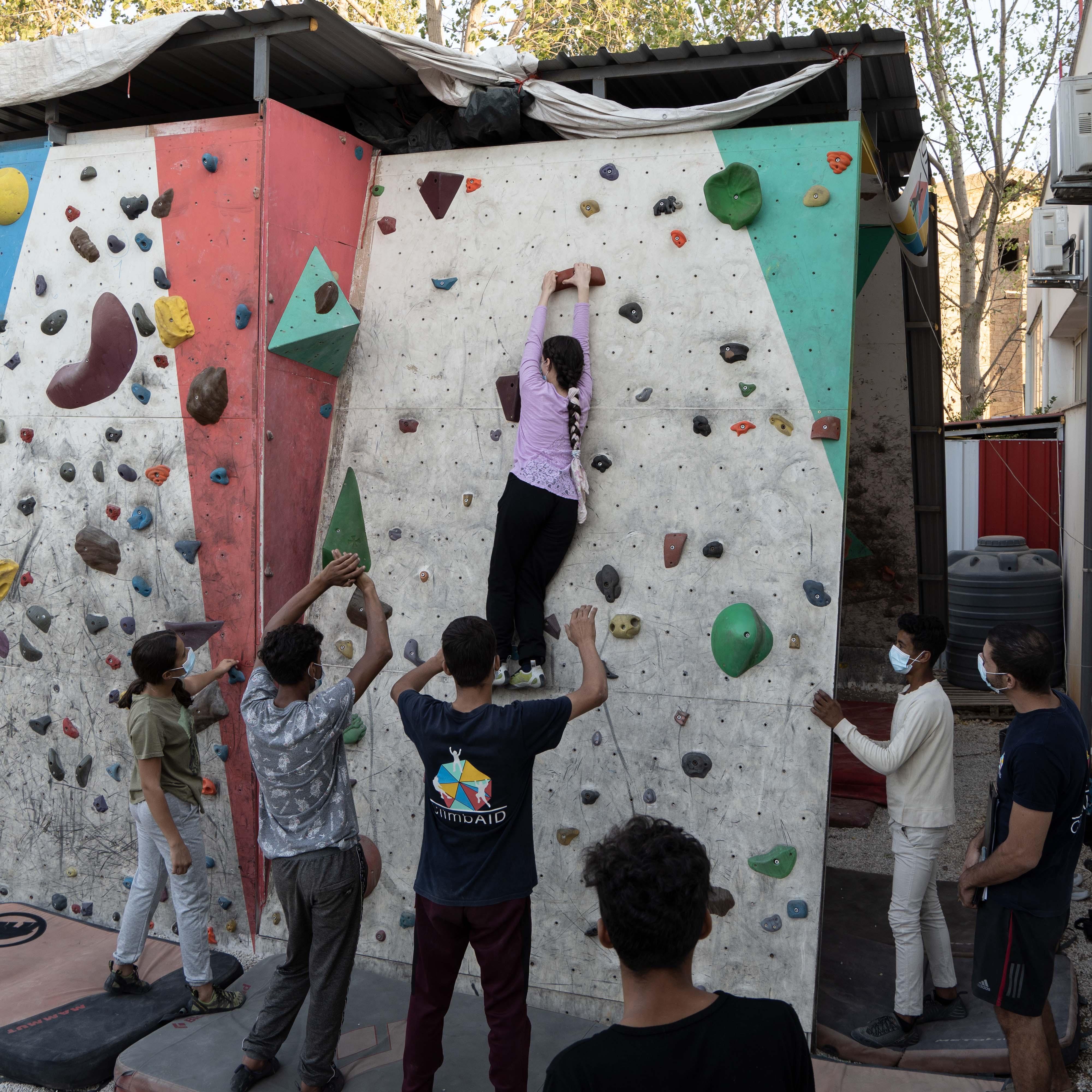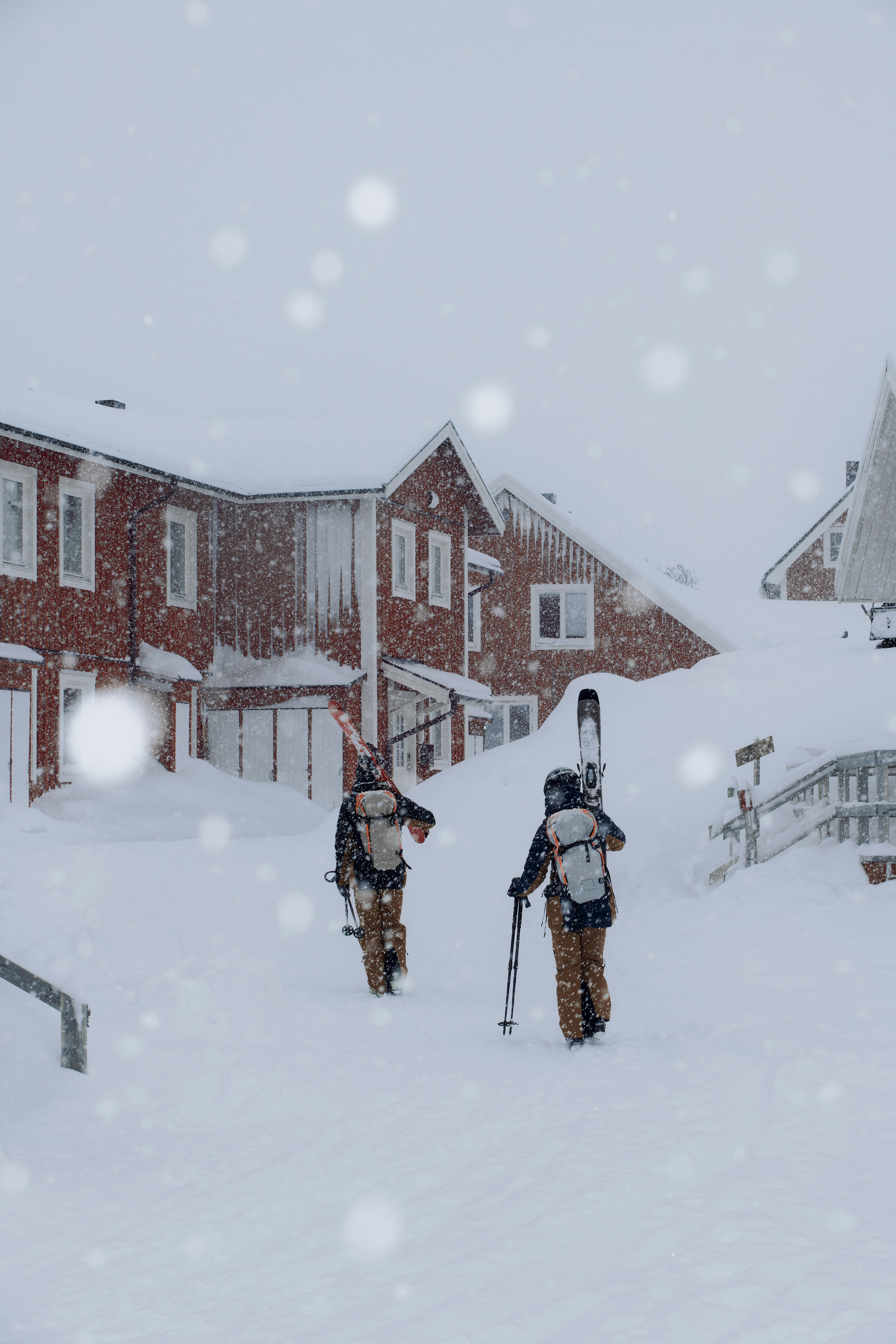What it takes to respond: An Interview with Kinder Mountain Rescue
10/2021
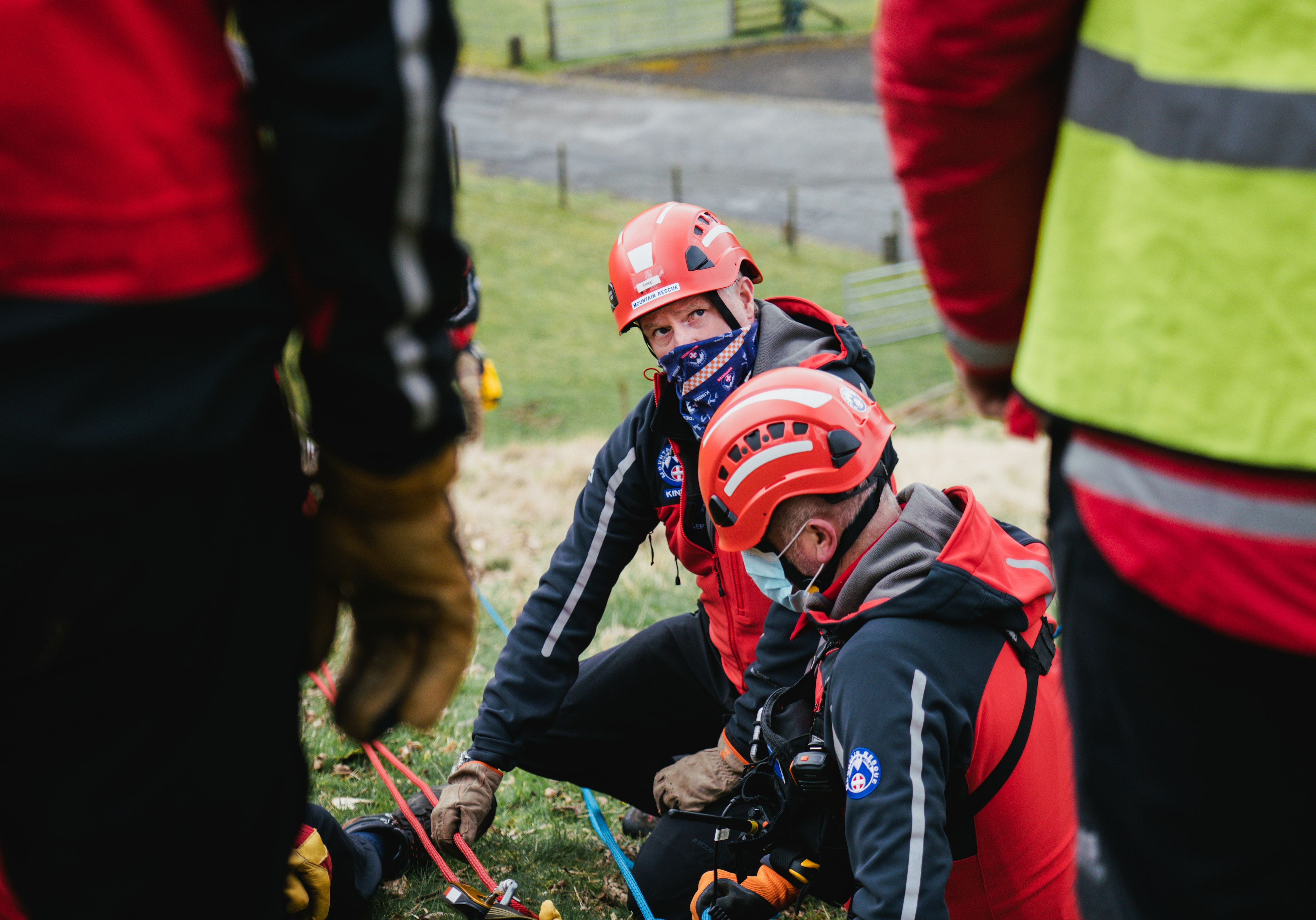
10/2021
@Sam Walker
Sam Walker
Sam Waller
For the last 50 years the Kinder Mountain Rescue Team has been helping climbers, hikers and fair-weather walkers enjoy the spectacular splendour of Kinder Scout in the Peak District, assisting with everything from rolled ankles to full-on late-night rescue missions.
It’s an impressive operation, especially when you realise that the team is operated solely by volunteers, who are on-call around the clock—always primed to drop everything to head to the hills, whatever the weather.
Alan Howarth has been part of the KMRT for 18 years, balancing a full-time job and family life with his commitments as Deputy Team Leader. We called him up to find out more about the team, what they do, and how you can avoid meeting them...
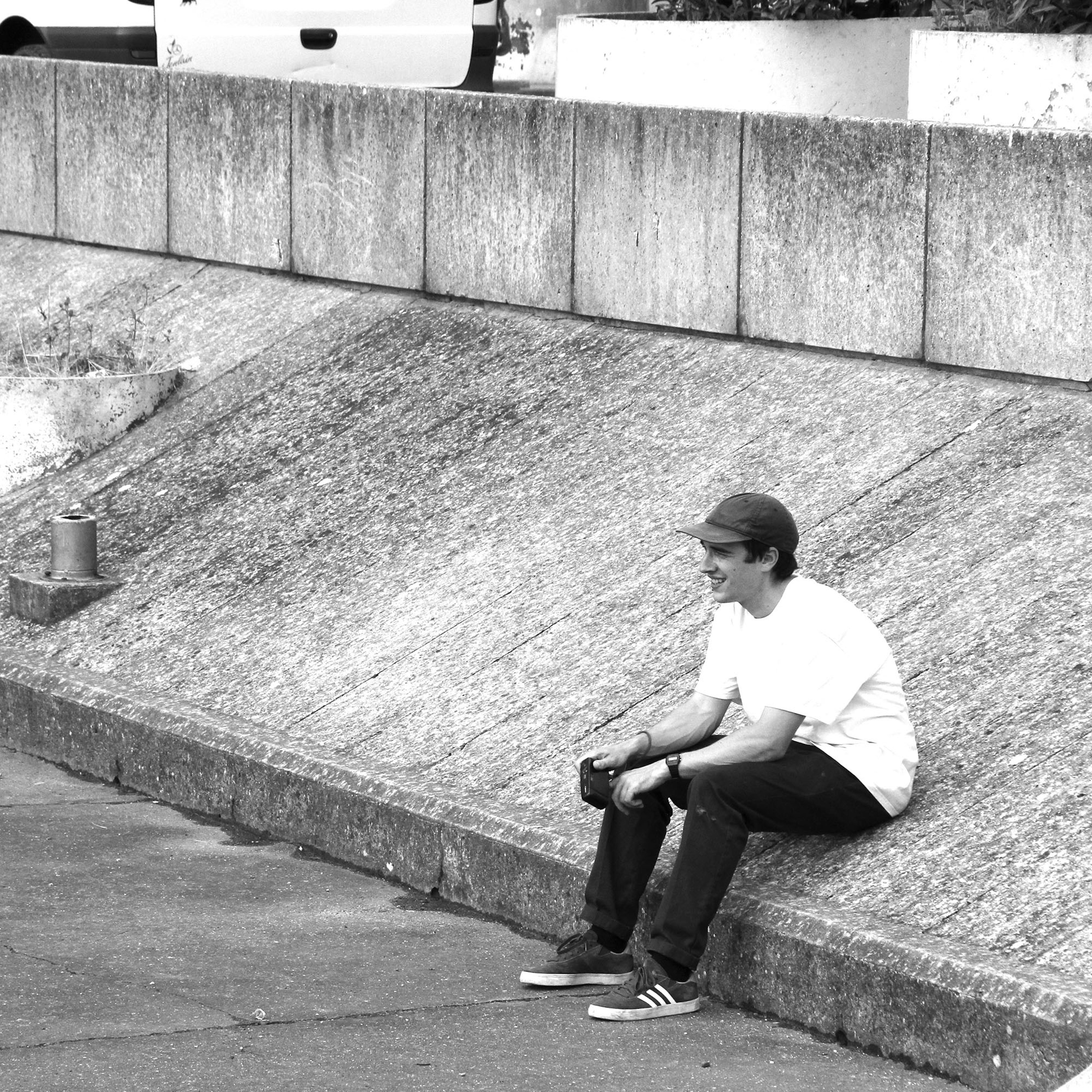
You had a call-out last night. What happened? Were you out for long?
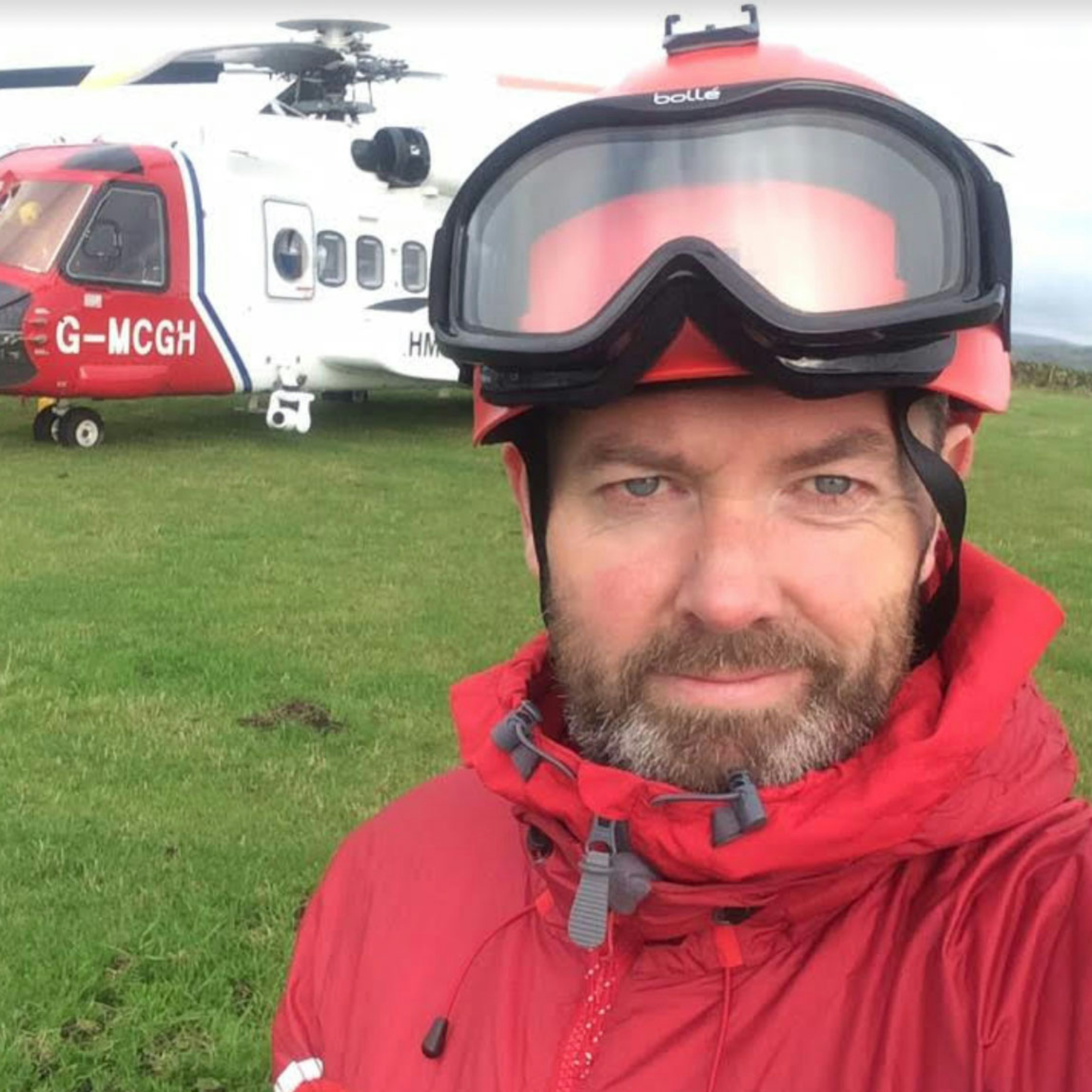
It was a straightforward one—we found them pretty quickly, but it was still about half 10 when we got home. It takes time.

Are call-outs like that a regular thing? How often do you head out?

You often get a couple of weeks where you get nothing, then you’ll have a sudden glut of callouts. We’ve done quite a few in the last couple of weeks, but we had two or three weekends before then when we didn’t get a call-out at all. Monday night is a rare one. The weird thing is that whenever you expect a call-out, it never happens. On clear days with long daylight hours, we tend to go out more for injuries than anything else. If we get a call at three o’clock on a Saturday afternoon, there’s a fair chance it’s going to be an injury, whereas if we get a call at eight o’clock on a Saturday night, it’s probably going to be someone who’s lost.
“...We had no idea where they were, and it’s a huge area.”

Can you tell us any more about the call-out you had last night?

In this case, they were in our popular spot for rescues. Kinder has a major route around the edge—a path that everyone follows—and then there’s another path that halfway along disappears and people have to take random routes. These guys did that, and it was really muddy. They had been knee deep in a bog, it’d gone dark and it was really cold and windy. They couldn’t decide whether to backtrack their route, or carry on, but they didn’t know how far they had to go, so they fortunately sat down and had mobile signal. If they didn’t have signal, it would have been very different.We did one where a lady and her son were lost, and that was in the same place, but the difference was that they didn’t have signal, and we only found out about them as the police found their car in the car park. Her husband called the police to say they hadn’t turned up, but that was after a couple of hours of waiting around, wondering why they weren’t back yet, and then it was maybe an hour for the police to come and check the car park. So we had no idea where they were, and it’s a huge area.

That changes things completely—that’s a full search.

In that scenario, we call all the teams in the Kinder area. There’s four of them, so that means there can be 30 or 40 people from each team, all out at the same time, plus search dogs. We’ve had that situation before where it turns out they’re not even there, but 120 people have turned out. It’s such a big area that you’ve got to absolutely blast it, otherwise by the time you find them it’s too late.

And you’re on call all the time for this? Or do you have shifts?

No, we don’t have shifts. The way we operate is that we work on the grounds that we need about 25 people to operate a call-out. We’ve got 50 team members, permanently on call all the time, and we assume we’ll get around a 50% hit rate of people turning up.

How did you get involved in the Mountain Rescue then?

This year is my 18th year. I used to be into climbing and the outdoors when I was single, and then when I got married and had kids, it kind of grinded to a halt a bit—I couldn’t just go off for the weekend with my mates climbing in the same way. Just after my son was born, I was kicking my heels around a bit, and my wife had seen an article in the newspaper, saying the team were looking for members, and said why didn’t I apply. I thought, “Well, if you’re offering…” Because obviously it comes with a commitment from both of us. It can be quite hard work, but I must be getting something out of it, because 18 years later, I’m still as keen.

Have things changed for Mountain Rescue since you’ve been involved?

The first thing that’s changed is that it’s gotten significantly busier. The number of people on the hill has gone up year after year, and it stands to shoot up because of lock-down. When we had the first lockdown, it went really quiet—we had absolutely nothing for about six weeks. And then when things opened up again, we suddenly got really busy. The Peak District is one of the busiest national parks in the world, because it’s so near so many urban conurbations, so I think it’s going to continue to be ridiculously busy.
“The number of people on the hill has gone up year after year, and it stands to shoot up because of lock-down.”

Modern technology must have changed things a lot too?

Yeah, technology has made quite a big difference. When I first joined, we were just moving away from pagers onto texts. But the big game changer was the launch of the first phone location service called SARLOC, which is internal to Mountain Rescue. That basically worked by us sending them a text, and then it’d send us back their GPS reference, and plot it on a map. The first time we used that was an enormous game changer. Before that, at best we’d get a rough description from the casualty, but now we just need them to reply to our text and we get the ping on our map. That makes a massive difference. But if we don’t get that, and they don’t have signal, it’s suddenly really hard.

I can imagine. What’s the history of mountain rescue in the Peaks?

Before these teams were formed, mountain rescue in the Peak District was mainly an RAF (Royal Air Force) thing, going to get pilots who’d crashed whilst coming in to land. When aircraft navigation was poor, there used to be a lot of wrecks on the Peaks, so the RAF teams would go out to rescue those. The Peak District Mountain Rescue was set up after three scouts died doing a walking event, called the Four Inns Walk, in winter. It wasn’t properly marshalled, and they couldn’t get a proper rescue team to go and get them, so off the back of that, they thought they’d formalise it and set up proper teams. And our team kind of spun out of that really.
“What we do could be quite dangerous, but our job really is all about taking the risk out of it.”

And they were just people, similar to you, who had day jobs?

Yeah, they were. They were mainly local walkers and climbers. I think before then, there was an informal thing where the local policeman would get the call, and then he’d go and knock on peoples’ doors and say, “You go climbing don’t you? Come and give me a lift.” He’d round up a posse who’d go and help him. But there was no formal training going on there, so they wouldn’t operate particularly well together. A lot of what we do now is to make sure we have procedures for everything. You’d sort of think that what we do could be quite dangerous, but our job really is all about taking the risk out of it.
“They’d been out since nine o’clock in the morning, and it was half one at night when we found them.”

What do your family think of it?

They’re really used to it. My son has only ever known it. When I get the call, and my Thunderbirds ringtone goes off, they know I’m going out. It’s one of those things where if you’re sat at home, doing nothing, you never get a call—it’s always when you’re going for a meal, or going to the cinema. They’re used to it though, they’re really understanding about it. My wife rolls her eyes when the phone goes off, but when I’ve gone out and done something significant, she’ll be like, “Yeah, you did the right thing there.” You don’t know what’s going to develop as you go—sometimes on the ‘easy’ jobs, something happens and it turns into something significant. We’ve had some epics.

Is there a story you’re most proud of?

Well, I think the one that stands out was that lady and her son I mentioned before. Her and her son had been out all night in a pretty horrible storm. There was ice everywhere, it was freezing cold, and they’d been out since nine o’clock in the morning, and it was half one at night when we found them. He was in medium hypothermia, and she was drifting into unconsciousness and was literally about to die. Fortunately part of the search plan involved getting the coast guard helicopter to search as well, so when we found them we landed the helicopter and took them off to hospital. She’d literally sat there with her 23 year old son and said their goodbyes. They’d laid down and prepared to die when they heard one of our guys shouting for her as he came over the top. She’d gone from being convinced that she was about to die, to suddenly being saved. That’s why you do it.
“It can be really emotionally draining... the highs are really high, and the lows are really low.”

These are pretty extreme situations you’re getting into. Is there a certain character trait you find with people in these Mountain Rescue groups?

I think there are a number of character traits, I wouldn’t say there’s one. Ex-military people quite like it, because there’s the same camaraderie, in the same kind of areas. It gives them what they used to have when they were in the army. And then we get quite a lot of teachers—I’m not quite sure why. Maybe because a lot of them are into the outdoors?We’ve moved away from that macho thing, where you’ve got to carry as much weight as you can without complaining, and be able to yomp 20 miles at a time. Different people bring different things, so skills and decision making are just as important as the physical ability to go and do some of this.

I imagine you’ve got to be quite emotionally strong too. There must be some occasions where things don’t go quite to plan.

It’s the usual thing where you get nothing for a couple of years, but then in the last two weeks, we’ve had three fatalities that we’ve dealt with. All of them are really emotionally draining. The worst thing for me was when we had one of our team members die when we were on a call-out. They had a heart attack whilst they were out. He was a guy I’d known since I’d joined—he’d been in the team for years, so yeah—it can be really emotionally draining. But it’s one of those things where the highs are really high, and the lows are really low. We’ve got to really keep on top of following up on people, saying, “Look you did this today, do you want to talk about it? How are you feeling?” We don’t want people to scuttle off and not tell anyone that they’re having problems. We try to be as open as possible, and again, this is getting away from having too much of a macho culture. At least if people can talk about things, we’re a step further on. It can be really challenging, especially for people who’ve come straight out of a day job and their only training is what we’ve given them. They’re going to have to deal with something that full-time emergency services will have to deal with, and they’d probably get a lot more professional support.

Maybe on the other side of that it shows that ‘normal people’ can do some pretty extraordinary things. It’s pretty impressive how someone can do all this after a day at work.

Yeah it is. When the team’s been out, looking for somebody in horrendous weather, and we get them, and everybody comes back, safe and in one piece, I’m really proud of them. It’s really good when it all comes together. Even though they’re ‘amateurs’, they operate really professionally.

That’s something I was wanting to talk about actually. Is it all just funded by donations?

Yep, it’s entirely donations. When I joined, it was mainly tin rattling—which was all done by my team members. So as well as all this stuff, you had to go out and collect the money to go and do the stuff. But we now use social media, and we also pursue corporate grants. One grant might be the equivalent of five days stood collecting outside of Tescos.

If someone would like to donate, what’s the easiest way they can do that?

We have a Justgiving site, which seems to be the easiest way now. That seems to work really well.

Changing the angle a bit now, how do people avoid having to call you lot up? What should they be thinking about before they head to the hills?

One of the things that is really difficult is that the people we engage with, or the people who end up on our website, aren’t the people we need to be talking to. They already know what it is to be out in the mountains. If you take out injuries, which can happen to anybody, the people we tend to go looking for are the ones who underestimated what they were going to do. Maybe they thought they’d go out and have a walk in the snow, but didn’t realise it takes twice as long to walk in the snow, so it’s gone dark. And if you weren’t planning to be out in the dark, you won’t have a torch, so you’re immediately stuck.
“Most people we go and rescue, it’s not one thing that has gone wrong, it’s a couple of things on top of each other.

So it’s a lack of preparation then?

Yeah, lack of preparation, and lack of awareness of what you’re doing, and how you’re doing it. With most people we go and rescue, it’s not one thing that has gone wrong, it’s a couple of things on top of each other. If it takes a bit longer, and you’ve still got the path, that’s fine—but if it takes a bit longer, and you’re not on the path, and it’s starting to get dark, things start to add up, and that’s where it goes wrong. And it’s very hard for us to get that message across to people who aren’t planning a day out in the hills—they’re just going for a walk.

It’d maybe be unrealistic to expect everyone to go out fully kitted out with all the gear, but what would be an attainable step that everybody could take?

I think it’s about assessing your equipment for the conditions you’re expecting. If you’re going up somewhere high, in poor conditions, you’re going to have a miserable day if you don’t have the right kit—even if you don’t need rescuing, it’s going to be horrible. In those conditions, you do need the right kit, but in easy conditions, you maybe only need a few things. You’ll want to get your footwear right, as otherwise you’re going to end up with blisters or a broken ankle, and you’ll want to get your layering right. In high mountains, it’s very rarely not windy, so you need something waterproof and windproof, and then you need something warm underneath it—particularly if you’re going to stop. I always take what I need for the worst conditions—it might go dark, it might be freezing, it might chuck it down with rain and I might be out for longer than I think, so I’ll have all those options covered.

That makes sense. What would you say to somebody who was maybe thinking of getting involved in something like this?

We’re all in it for our love of the outdoors. Every one of us is another hill-walker, so essentially what we want is for people to be able to go out into the mountains, and feel safe doing it. We all do it for the love of it, so for anybody who was thinking of doing this, I’d thoroughly encourage it, as long as they realise the time commitment that comes with it.

Is there a high drop off rate with people who join?

There is. We try to explain as much as possible how consuming it is on your life, and how much it affects your family, but what tends to happen is that around two years in, we get a chunk of people dropping out. The novelty has worn off, and they’ve found out how hard it can be, and it maybe doesn’t work for them, or they get a change in circumstances, and they just can’t do it. But on the whole, once you get past a couple of years in, you tend to be in for a long time.
“When you trust people with your life, on regular occasions, you end up becoming really close...”

What’s kept you in it after all these years?

It’s the camaraderie—when you trust people with your life, on regular occasions, you end up becoming really close to them. And there’s also the fact that I get to go out and do something interesting. I might have nothing on—it’s a boring night watching the tele, and then the phone goes off and suddenly, something exciting is going to be happening. You never know what it’s going to be.

It’s not like meeting up every Thursday night to play badminton.

Yeah. We obviously have those kind of hobbies as well, but they’re just not the same. They don’t fill that gap, and they don’t give me that feeling of, “Today I’ve done something really good.” It’s quite rare, but occasionally, you do find somebody, and you actively save their life—and the buzz from that is something you don’t get anywhere else. You get home and think, “Well, after the last couple of years of effort—it’s all been worthwhile.”
The 50 members of the Kinder Mountain Rescue Team operate on a purely voluntary basis and are almost exclusively funded by public donations, with all proceeds from fundraising going directly towards equipment and resources used on call-outs.
Support the heroic efforts of the rescue team by giving a one-off or monthly donation on their official KMRT JustGiving page .
